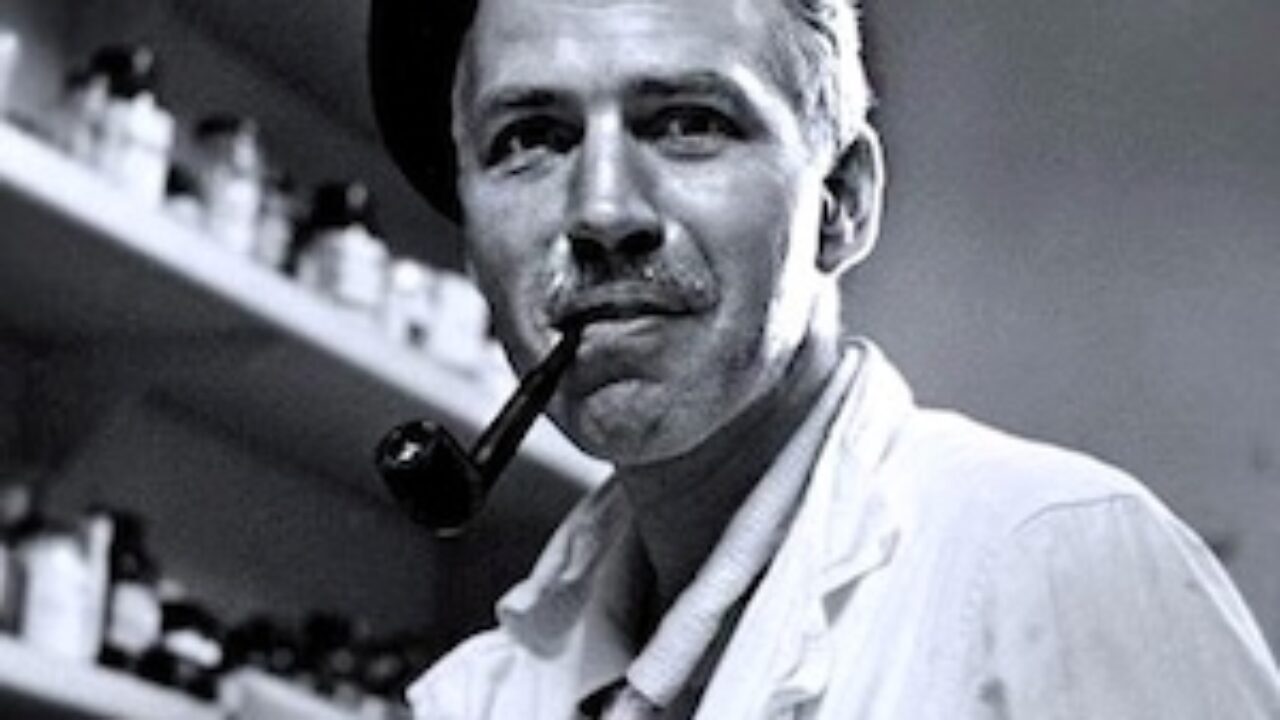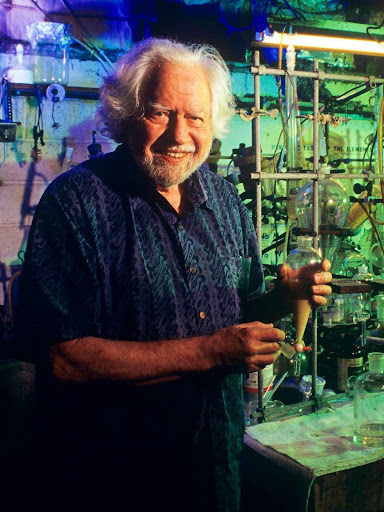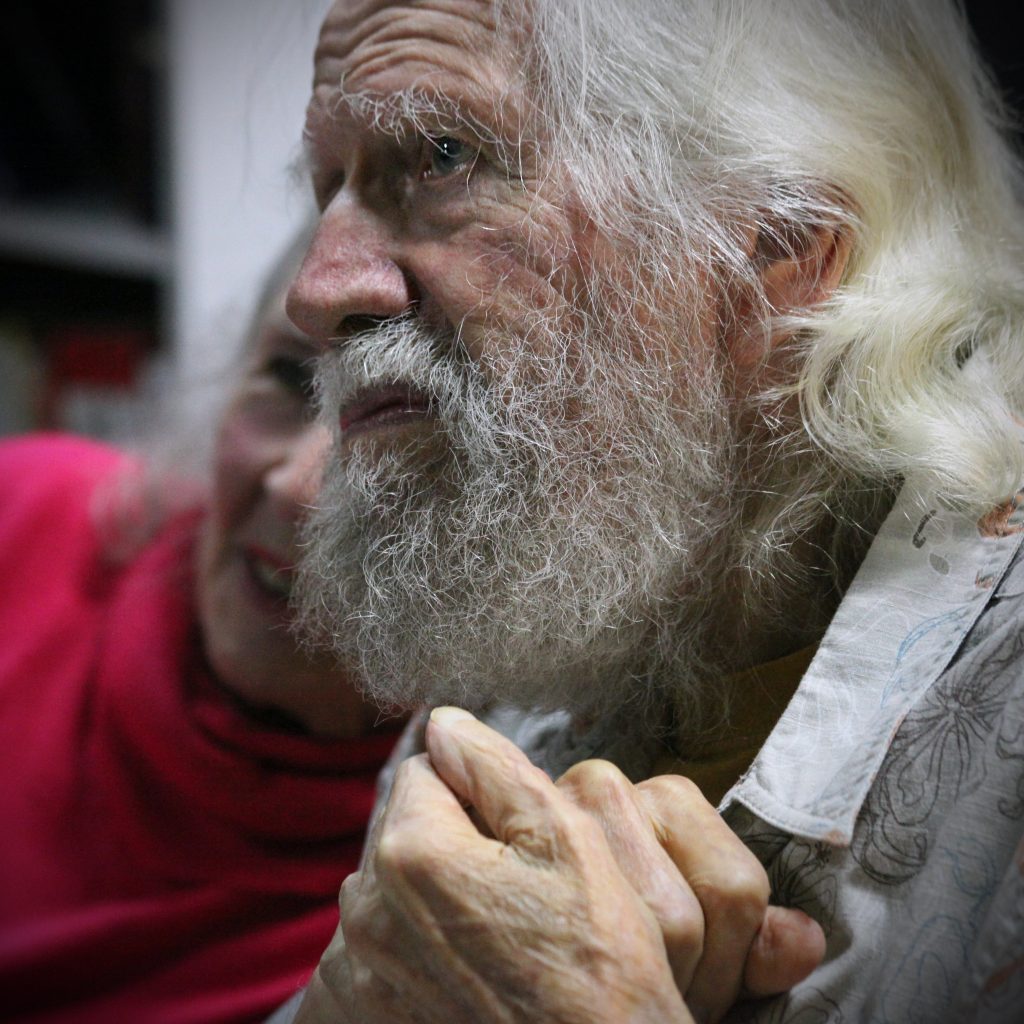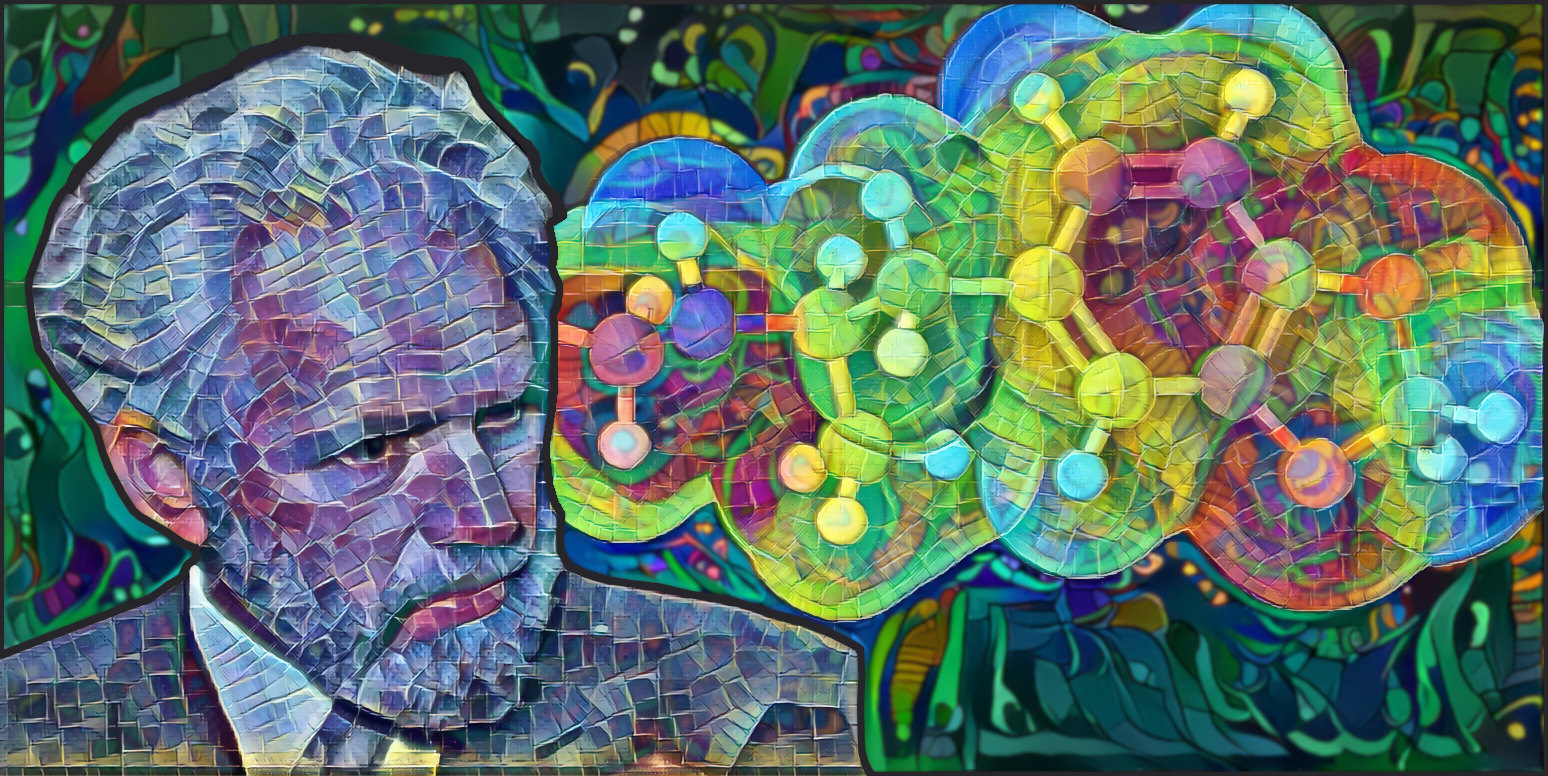
in this article
- Alexander Shulgin’s Life
- The Rebirth of a Radical Chemist
- The Godfather of Ecstasy
- The Lasting Influence of Alexander and Ann Shulgin
- Practical Relevance Today
Are you 18 or older?
Please confirm that your are 18 years of age or older.
You are not allowed to access the page.


Disclaimer: The views and opinions expressed in this article are those of the authors and do not necessarily reflect the official policy or position of Chemical Collective or any associated parties.
Dr. Alexander “Sasha” Shulgin was as much a scientist as he was a part of his own experiments. As a manufacturer of synthetic drugs, he created and tested on himself nearly 250 compounds, most notably that of MDMA, which he introduced to the psychopharmacological community in the seventies. [1] He created these substances within the confines of his own backyard laboratory, in which he manufactured and consumed his creations alongside his wife, Ann.
Shulgin enrolled as an organic chemistry student at Harvard University when he was 16 years old. In 1943 he left school to join the U.S. Naval force. It was at this time, while serving on the USS Pope, that Shulgin was made aware of the strong effect placebos exhibit on human consciousness when he mistook some sugar in a glass of orange juice as a sedative, which put him right to sleep. When Shulgin left the military, he completed a PhD in organic chemistry as well as post-doctoral degrees, he went to pursue his career. [2] Sasha was a chemical researcher for Dow in 1960 when he had his first psychedelic experience with mescaline, which had a profound effect on him moving forward. [3]

Shulgin left Dow Chemical in 1966 and studied neurology for two years before establishing “the farm,” a compound containing Shulgin’s laboratory and home. He would also make ties to the DEA in San Francisco around this time via his friend Bob Sager, head of their western laboratories. From this unique position within the established legal confines that surrounded him, Shulgin went on to obtain a DEA Schedule I license and began manufacturing psychedelic compounds. [4]
For over twenty years under legal jurisdiction, and even after his DEA license was revoked in 1994 during a raid on his home, Shulgin would manufacture chemicals in search of psychedelic effects. His self-described “magical half-dozen” compounds, or those which he deemed to be most important, are as follows: Mescaline, DOM, 2C-E, 2C-T-2, 2C-T-7, and 2C-B. 2C-E is noted with special regard as “the teacher” for its ability to produce introspective experiences and, as Shulgin put it, “face one’s demons” and better yourself as a person. [5]
Together, Alexander and Ann successfully wrote, self-published, and distributed several books. Two however remain more widely known than the rest: PiHKAL (Phenethylamines I Have Known and Loved): A Chemical Love Story and TiHKAL (Tryptamines I Have Known and Loved): The Continuation. In these books, the Shulgins detailed synthesis of more than 150 compounds. The volumes are described as part love story, part scientific manual. I suppose this summation is as good as any on the nature of psychedelics: part science, and part love.
1991 saw the publication of PiHKAL. Within its pages, you will find the Shulgins’ accounts of their experiences inside the phenethylamine class. This class of drugs is comprised mostly of psychedelics and empathogen-entactogens, with a key substance of this group being MDMA. It was in 1994 that the DEA raided Shulgin’s home, reportedly over the publication of PiHKAL. On PiHKAL and TiHKAL, Richard Meyer of the DEA’s San Francisco division had this to say: “It is our opinion that those books are pretty much cookbooks on how to make illegal drugs. Agents tell me that in clandestine labs that they have raided, they have found copies of those books.” [6] The implications of this are subtle but mysterious and illusory. It can be said that at this time, perhaps the scope of the Shulgins’ body of work was limited to the very inner circles of clandestine chemists that existed in the early nineties- those actually manufacturing the compounds listed therein. By 1997, TiHKAL was released as both a follow-up and a companion to PiHKAL. TiHKAL dives into the tryptamine class of drugs. The reception and climate upon which TiHKAL was received were very different from that of PiHKAL’s reception, with the Shulgins having been propelled to the forefront of a seemingly ever-reaching and fractal psychedelic counterculture, one that could not be contained or defined by such a simple, derogatory term as “hippie.”

In PiHKAL, Shulgin reveals that while he first synthesized MDMA in 1965, it was not until the mid-seventies that he tried it himself. He had learned of a “special effect” produced by the drug and resynthesized it for his own consumption in 1976. After experiencing the effects of MDMA, Shulgin made it his duty to share it with the psychological and psychiatric fields. He gave some to a friend of his, psychotherapist Dr. Leo Zeff, who proceeded to spread ecstasy across the fields of psychiatry and neuropharmacology from his position as a psychotherapist. This is why Shulgin is commonly credited as the “Godfather of Ecstasy,” and also why he is widely misconceived to have been the discoverer of MDMA. [7]
It is further evidence of Dr. Alexander “Sasha” Shulgin’s lasting imprint on MDMA use today that “Sasha” is a common term for MDMA. In 1979, Alexander Shulgin spearheaded an open-ended study into the effects of MDMA at the Pacific Graduate School of Psychology in San Francisco. Under this study, psychologist Sallie Kueny would administer MDMA to nine persons in a non-clinical setting, such as their own homes. All of the persons reported overwhelmingly positive experiences and a lasting increase in quality of life. [8]
Shulgin believed that ecstasy never found its target audience, and its potential was lost on the abuse of the drug by the club scene surrounding the explosion of electronic dance music in the late eighties and early nineties. Perhaps it is ecstasy that Shulgin longed to be normalized even more so than some of the other compounds he synthesized. However, the often mis-sold, mislabeled, counterfeited, and generally, elusive MDMA is not what a lot of people were actually consuming in pursuit of the mythical ecstasy described by Dr. Shulgin. Dirty presses and dangerous substances found their way into the minds of ravers who were often left with nothing more than a false impression of a substance that was not at all how they expected it to be. Shulgin seemingly felt the burden of ecstasy’s misappraisal to the end of his life, when he expressed the heaviness of so much lost potential. [9] In PiHKAL, Shulgin had this to say on his own personal experience of taking 120mg MDMA –
“I feel absolutely clean inside, and there is nothing but pure euphoria. I have never felt so great, or believed this to be possible. The cleanliness, clarity, and marvelous feeling of solid inner strength continued throughout the rest of the day, and evening, and through the next day. I am overcome by the profundity of the experience, and how much more powerful it was than previous experiences, for no apparent reason, other than a continually improving state of being. All the next day I felt like ‘a citizen of the universe’ rather than a citizen of the planet, completely disconnecting time and flowing easily from one activity to the next.” [10]

Alexander and Ann Shulgin demonstrated supreme willpower to create and experience all of the psychedelics they possibly could, both for their own benefit, and to explore the potential of the psychedelic experience to shape the human experience positively for everyone. It is an inspiration to many and many yet to come that the actions of two people in a backyard laboratory could spawn an intergenerational wave of change. Real change is perhaps the most difficult state to affect within the confined stages of a counterculture penned up outside the realm of legality.
The Shulgins have been painted, as seen above, by world-renowned visionary artist Alex Grey. This symbolizes further their engrained significance as counter-cultural icons. Grey has been known to paint other figures within the scene, such as Albert Hoffman, the man who first synthesized LSD.
The Shulgins truly went where no one has gone before and have rightfully earned their recognition within the psychedelic movement, as well as historical significance. Ann Shulgin in particular is credited with a significant contribution to psychotherapy: the knowledge that MDMA “allows users to enter into the space of their psyches and confront their shadow without the conditioned anxiety, fear, or self-hatred.” [11] Ann Shulgin’s shadow work as a lay therapist serves as both a predecessor to and a model for psychedelic therapy and research to this day. The Shulgins co-founded Transform Press in 1991 which is still publishing written works.
Another remnant of the exploration of substances undertaken by Ann and Alexander Shulgin is the “Shulgin Rating Scale,” which is a general method of rating a psychedelic experience. The scale is comprised of six levels: minus (-), plus-minus (±), plus-one (+), plus-two (++), plus-three (+++), and plus four (++++). Minus (-) experiences are those that are indistinguishable from baseline, sober consciousness or those that have no noticeable effects.

Plus-minus (±) level experiences can be described by the user not being completely sure of a noticeable alteration in consciousness. Shulgin notes of these experiences that they may reach the point where they trigger a user’s “alert,” which is a feeling some of the more experienced users of psychedelics get after they take any psychedelic drug. It could be a tingling sensation in the back of your head or a slight difference in visual activity.
The third level, plus-one (+) can be classified by a real effect being experienced by the user. During a plus-one state, users typically describe the early physical effects of lightheadedness, nausea, or compulsive yawning. Shulgin notes that a false positive would be an exceptionally rare occurrence during a plus-one level experiment. Experiments that have reached the plus-two (++) level are ones in which the effects have crossed a threshold so much so that they cannot be ignored. However, the effects can be made secondary to other activities.
Plus-three (+++) level effects differentiate themselves from all of the previous levels by achieving the maximum intensity of the substance in question. Also, plus-three experiments are unable to be repressed or ignored, and for better or worse the user is rendered a part of the experience.
The sixth and final level of experience, plus-four (++++), was placed into its own category by Shulgin. The addition of the fourth plus sign was not meant by Shulgin to signify an increase in intensity from the previous category. These experiences can only be described in words as “peak experiences” or “divine transformation,” ones that render the perception of their observer forever changed. Keep in mind, repeating the same dosage of the same substance does not repeat a plus-four experience. Plus-four may be described as mystical or religious in nature. [12]

The Shulgins are an inspiration to seekers and psychonauts the world over. Not only did they make us believe that it can be done, they flat-out did it. As much of it as they could render in their laboratory, nestled on an old ranch east of San Francisco. If light could touch it, the Shulgins wanted to explore it, and it is for this that I remember them the most. They had a true need to explore any and all things psychedelic.
Visionary potential has always been a thing of value to the human mind, and Shulgin made it his life’s work to ponder and create a vast array of knowledge that was personal, public, objective, and inexpressible. Generations of chemists are surely in debt to the knowledge discovered by Ann and Dr. Alexander “Sasha” Shulgin.
A. Mayhugh | Community Blogger at Chemical Collective
A. Mayhugh is one of our community bloggers here at Chemical Collective. If you’re interested in joining our blogging team and getting paid to write about subjects you’re passionate about, please reach out to Matt via email at matt@chemical-collective.com

Welcome to Chemical Collective.
Create an account to earn 200 welcome points.
Already have an account? Sign in


Check out our Community Blog and get involved with the conversation. You will be awarded 50 x ChemCoins for each comment up to a limit of 250 total ChemCoins.


Have you purchased any of our products? Reviews and reports are so important to the community. Share your honest opinion, and we’ll reward you with 50 ChemCoins for each review!


Every time you complete an order with us, you’ll be awarded ChemCoins for each Euro spent.
Welcome to Chemical Collective.
Create an account to earn 200 welcome points.
Already have an account? Sign in

Earn commission every time someone makes a purchase through your link.
When you become an affiliate, you will be allocated a unique link to share with your friends, followers, subscribers, or Aunt Susan.
You can choose to payout the commission earned once per month, or save it up to receive on a rainy day! Commission earned is 5% of the total order value per referral.
Contact us to join the Chemical Collective family and become an affiliate.
share your toughts
Join the Conversation.
RIP THE GODFATHER OF ECSTASY
Godfather of Psychedelics. A genius, great man.
His work is wonderful and a sort of research bible.
Love you Sasha, rest in peace 🕊️
It’s interesting that the use of psychoactive drugs are again starting to be used to explore issues of addiction, depression, suicidal ideation, PTSD and a myriad of other mental health issues! In America the schedule 1 of these drugs has been lifted after the Reagan regime deemed them dangerous! Imagine how much progress could have been made in the preceding 35 years in regards to psychiatry and psychotherapy. Such a shame and a wasted critical period of time!! I have a copy of Pikhal and Tikhal and would argue that they both could have advanced mental health issues exponentially were it not for Shulgin’s experiments being banned and his licence revoked ❤️❤️
Alexander is my Master by far !!! love this man, and been reseaching his products for a moment now 🙂 sad some are getting ban….
I’ve obsessed with this blog and all the high-quality articles for the past week or so, once again a great read! If only MDMA wasn’t illegal over here… :/